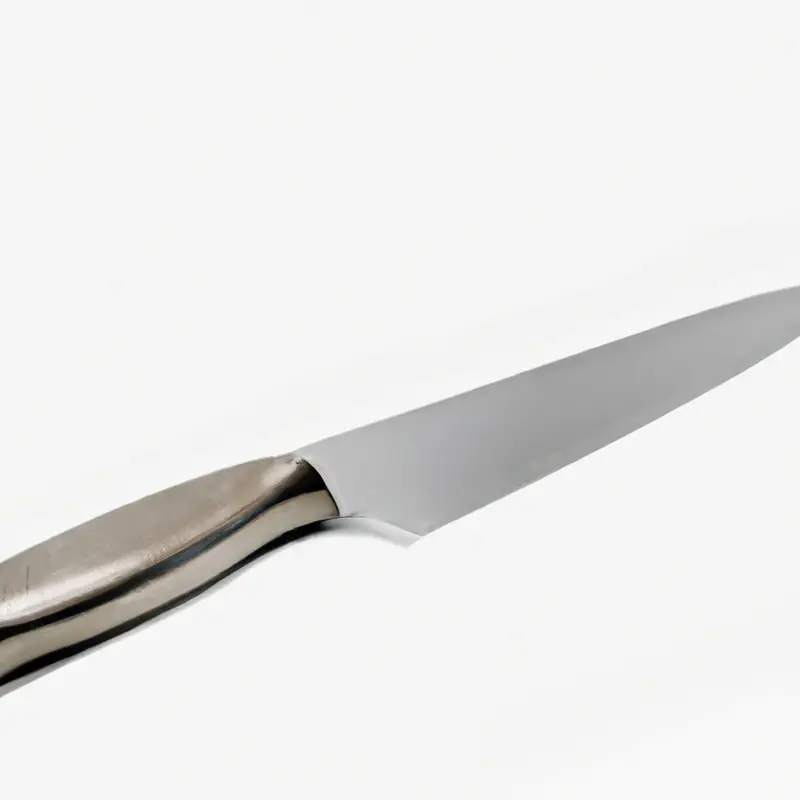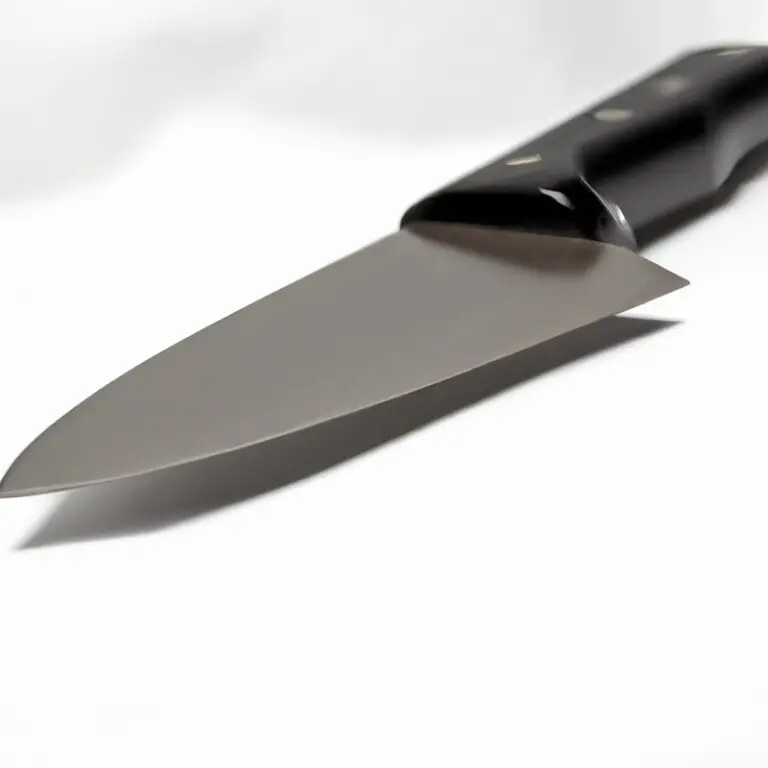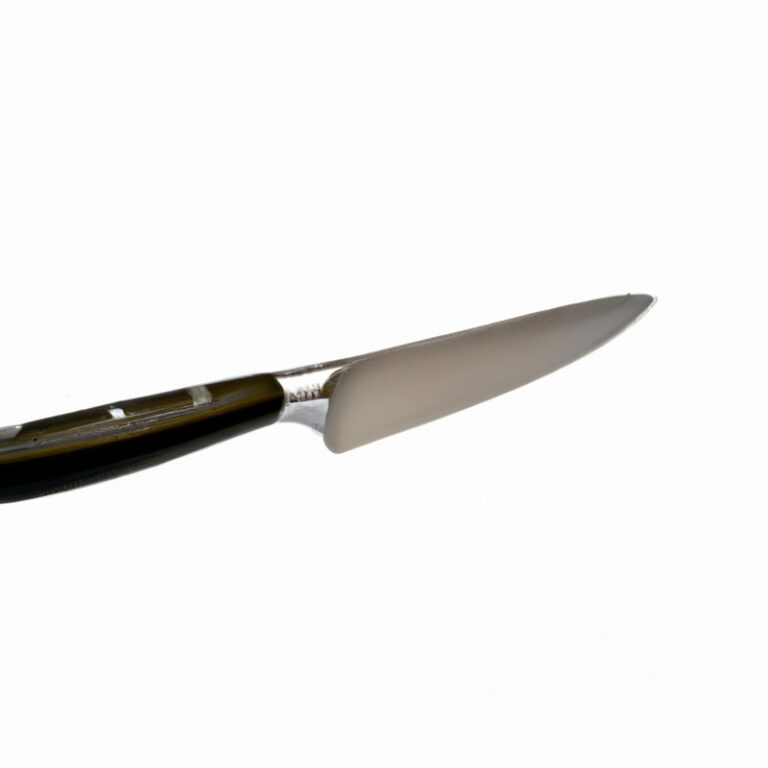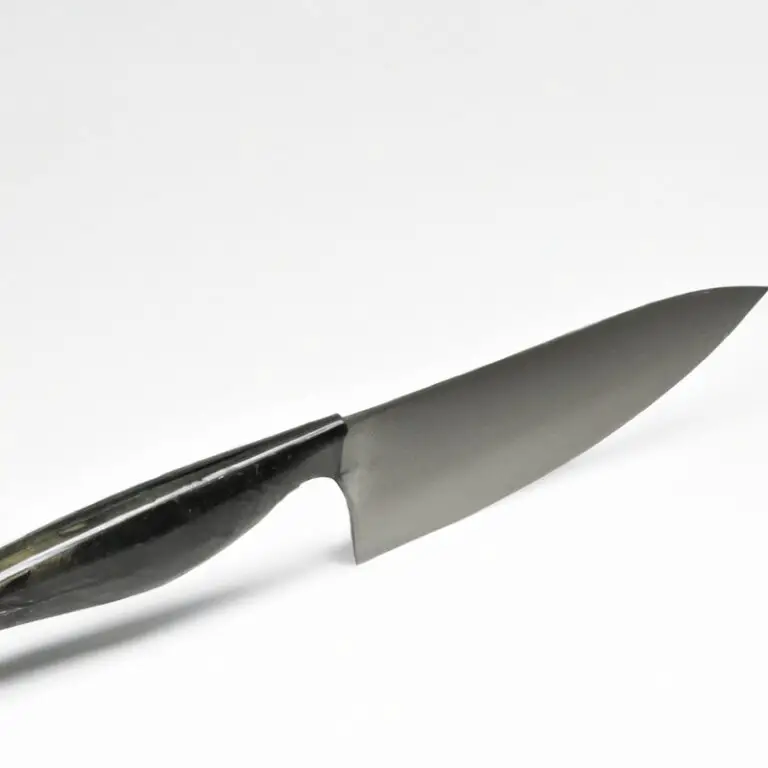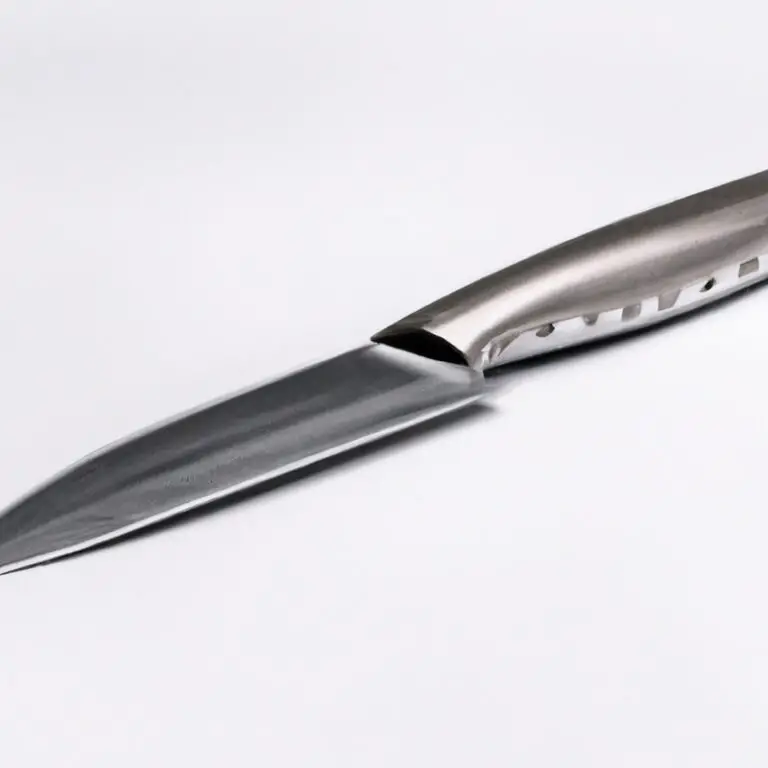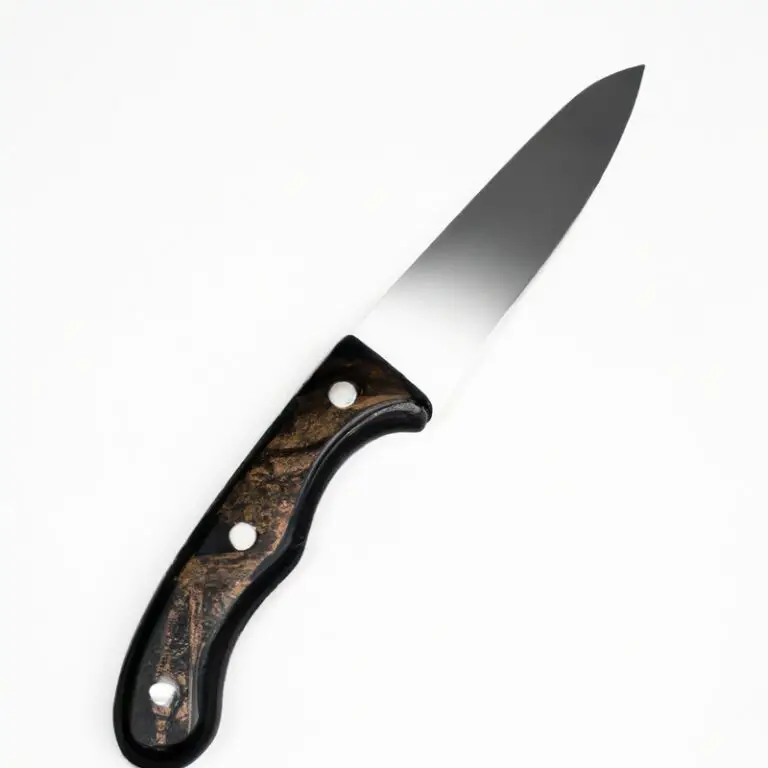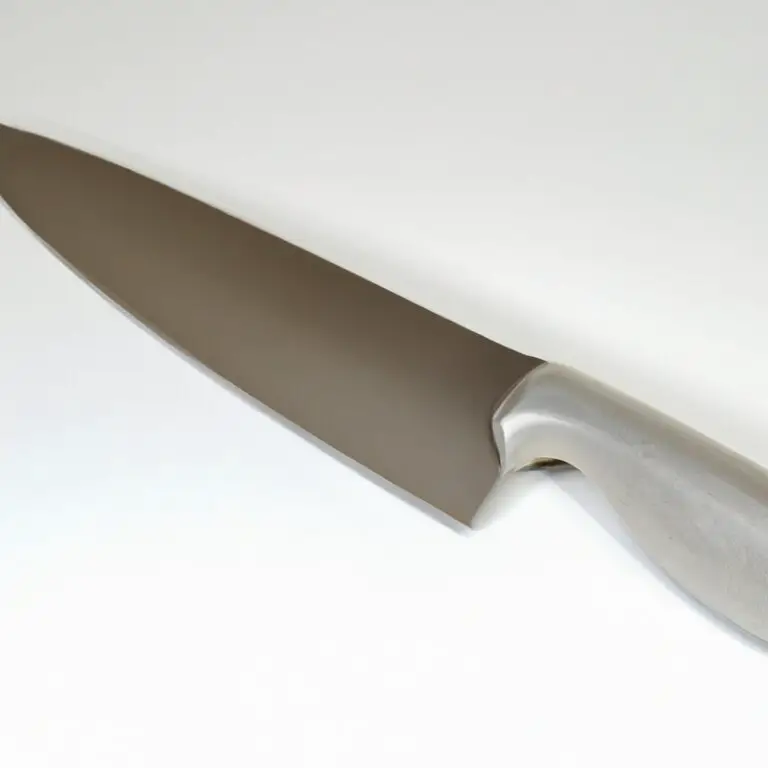Can I Use a Paring Knife To Slice Thin Cuts Of Meat? – Expert Opinion
Key Takeaways:
- Paring knives are not ideal for slicing thin cuts of meat due to their small size and lack of flexibility.
- A sharp chef’s knife is the best option for thin slices of meat as it allows for precise cuts and maneuverability.
- Using the wrong knife for meat cutting can affect the texture and presentation of the meat.
- Always ensure the knife is sharp and handle it with care to avoid injury during meat cutting.
When it comes to slicing meat, most people opt for specialized knives like a butcher or a carving knife. However, what if you don’t have them at your disposal?
Can a paring knife be used to slice thin cuts of meat?
As a professional chef with years of experience, I have encountered this question time and time again. In this article, I will walk you through the characteristics of a paring knife, its pros and cons, and techniques for efficient meat slicing.
So, whether you’re a home cook or just curious, read on to find out if a paring knife is suitable for slicing thin cuts of meat.
| Question | Answer |
|---|---|
| Can I use a paring knife to slice thin cuts of meat? | Yes, but it may not be the best tool for the job. |
| What type of knife is best for slicing meat? | A chef’s knife or slicing knife is best for slicing meat because of the longer blade. |
| Why is a longer blade better for slicing meat? | A longer blade allows for longer cuts and smoother, more consistent slices. |
| What should I consider when selecting a knife for slicing meat? | Blade length, blade thickness, and blade sharpness are all important factors to consider when selecting a knife for slicing meat. |
| Can a paring knife be sharpened to slice meat better? | A well-sharpened paring knife can slice meat, but it still may not be the best tool for the job. |
Understanding the Purpose of a Paring Knife
A paring knife is a small, versatile kitchen tool that is commonly used for tasks that require precision and control. Its short, pointed blade makes it ideal for peeling, trimming, and cutting fruits and vegetables.
However, when it comes to slicing thin cuts of meat, a paring knife may not be the best choice.
Unlike a chef’s knife or a slicing knife, a paring knife has a shorter blade that lacks the necessary length and weight to make clean, even slices through meat. Attempting to use a paring knife for meat slicing can result in uneven, jagged cuts that can affect the presentation and quality of your dish.
But don’t count the paring knife out altogether – it still has its place in the kitchen.
Its small size and precise blade make it perfect for tasks such as trimming excess fat from meats and poultry, or removing silverskin and membranes. It can also be handy for delicate tasks such as cutting thin slices of garlic or removing the tops of strawberries.
When using a paring knife, it’s important to hold it with a firm grip and make small, controlled movements to avoid slipping or losing control of the blade.
Regular sharpening and maintenance of the blade are also important for optimal performance and safety. Overall, while a paring knife has many useful purposes, it may not be the best choice for slicing thin cuts of meat.
When it comes to meat slicing, it’s best to opt for a knife with a longer, heavier blade that can more easily and cleanly slice through meat without compromising its texture and appearance.
What Are the Characteristics of a Paring Knife?
A paring knife typically has a narrow and pointed blade, which makes it perfect for precision tasks like peeling fruits and vegetables, trimming meats, and removing seeds from produce. The blade is usually between 2 to 4 inches long and is made from high-carbon stainless steel or ceramic materials.
The handle of a paring knife can be made from different materials, including wood, plastic, and stainless steel.
It should provide a comfortable and secure grip, allowing you to control the knife’s movements effectively. Paring knives come in various shapes, including straight, curved, and angled.
Straight knives are best for slicing and dicing, while curved ones are ideal for peeling and trimming fruits and vegetables.
Angled knives provide better leverage and control when working with tough or dense foods. Overall, the characteristics of a paring knife make it an excellent choice for performing delicate tasks that require precision and control.
Its narrow blade and comfortable handle make it easy to use and maneuver, allowing you to work with confidence and accuracy.
Slicing Thin Cuts of Meat with a Paring Knife
While paring knives are primarily designed for peeling and trimming fruits and vegetables, they can also be used for slicing thin cuts of meat. However, this task requires a certain level of skill and patience as the blade is short and narrow, making it challenging to achieve uniform thickness.
It’s crucial to keep the blade sharp and choose the right angle for slicing.
It’s best to use a paring knife for small and tender cuts of meat and avoid thick and tough cuts. Overall, if you master the right technique, a paring knife can be a suitable option for slicing thin cuts of meat.
Pros and cons of using a paring knife for Meat Slicing
Pros and cons of using a paring knife for meat slicing: Pros:
- Paring knives are lightweight and easy to maneuver.
- They have a pointed tip, which is useful for precision cutting.
- Paring knives are versatile and can be used for other kitchen tasks.
Cons:
- Paring knives are typically short, which may not be ideal for slicing larger cuts of meat.
- They lack the thickness and heft of other knives designed for meat slicing.
- Paring knives may not have the necessary sharpness for efficient meat slicing.
While paring knives can be useful for slicing thin cuts of meat, they are not the best option for larger, tougher cuts like roasts or steaks. When selecting a knife for meat slicing, it is important to consider the size and toughness of the meat as well as the qualities of the knife itself.
Proper maintenance and sharpening of any knife is also key to achieving the best results.
Techniques for Efficient Meat Slicing with a Paring Knife
When it comes to using a paring knife for slicing thin cuts of meat efficiently, there are a few techniques to keep in mind. First, ensure that the knife is sharp.
A dull knife can damage the meat and make it difficult to slice through.
Hold the knife firmly and make long, continuous strokes with a slight sawing motion to slice the meat. Use the tip of the knife to begin the cut and then guide it through to create a clean slice.
To make the slicing process even more efficient, consider freezing the meat for a short period to make it firmer and easier to cut.
And remember to use a cutting board with a stable surface to avoid any accidents.
Safely Handling a Paring Knife
Before using a paring knife, it’s crucial to know how to handle it safely to prevent injuries. Here are some tips for safely handling a paring knife:
- Grip the handle firmly: Hold the handle with a firm grip while keeping your fingers away from the blade.
- Keep the blade sharp: A dull blade can slip, increasing the risk of getting cut. Make sure to keep the blade sharp.
- Use a cutting board: Always use a cutting board when using a paring knife to avoid damaging the surface and prevent slipping.
- Cut away from your body: Always cut away from your body to minimize injury risk.
- Be focused and alert: Focus on the task at hand and don’t let distractions interfere while using a paring knife.
By following these tips, you can safely handle a paring knife and reduce the risk of injury.
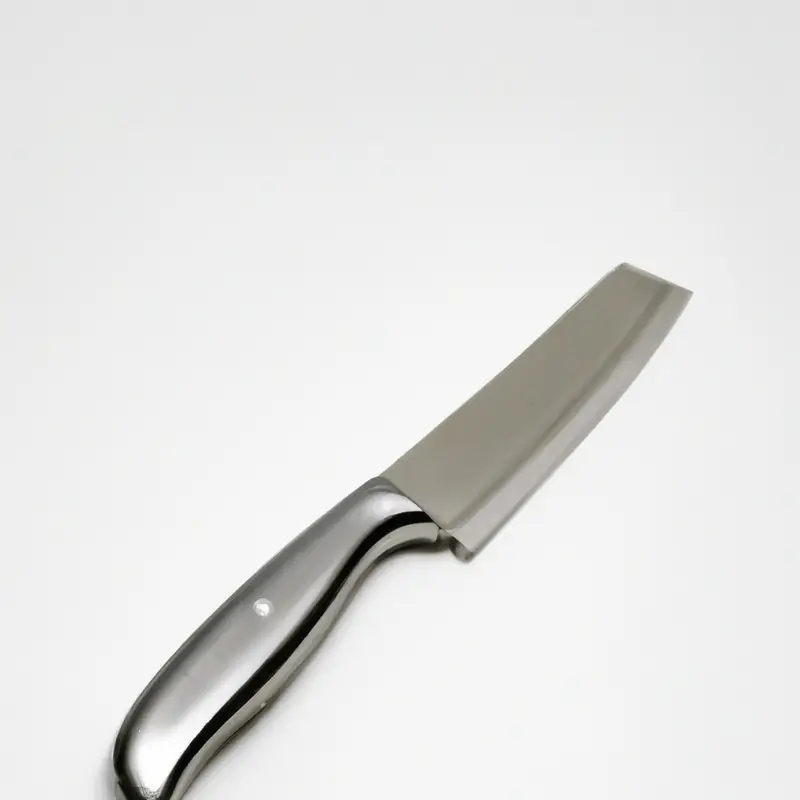
Proper Maintenance and Sharpening of a Paring Knife
Proper maintenance and sharpening of a paring knife are crucial to ensuring its longevity and efficiency. You should always wash and dry your knife after each use, and never put it in the dishwasher.
Instead, hand wash it with mild soap and warm water, then dry it thoroughly.
To sharpen your paring knife, you can use either a sharpening stone or an electric sharpener. Start by checking the angle of the bevel and match it with the angle on the sharpener.
Then, run the blade through the sharpener a few times until it is sharp enough.
It’s important to note that over-sharpening can lead to a shorter lifespan of your knife, so only sharpen it when it is dull or not performing as well. Additionally, regular honing with a honing rod can help maintain the edge of your paring knife between sharpening.
Proper maintenance and sharpening of your paring knife will not only make it more efficient for meat slicing but also prolong its life and keep it safe to use.
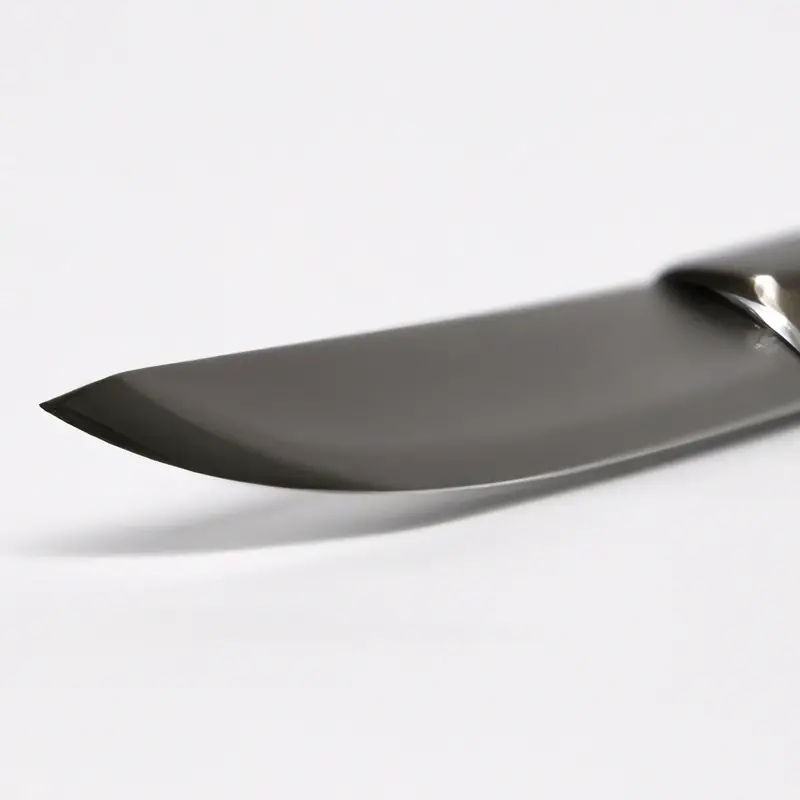
Other Knives to Consider for Thin Meat Slicing
While a paring knife can be used for slicing thin cuts of meat, there are other knives to consider that are better suited for the task. These include:
- Slicing Knife: This knife is specifically designed for slicing meats. It has a long, narrow blade that is thin and flexible, allowing for precise and uniform slices.
- Chef’s Knife: This versatile knife can also be used for slicing thin cuts of meat. Its wider blade allows for more surface area contact, making it easier to slice through thicker cuts.
- Carving Knife: As the name suggests, this knife is typically used for carving large cuts of meat. However, its long, thin blade also makes it a good option for slicing thin cuts of meat.
When choosing a knife for slicing thin cuts of meat, it’s important to consider the blade’s length, width, flexibility, and sharpness. A sharp blade is essential for clean and even slices, while a longer and narrower blade allows for more control and precision.
Ultimately, the best knife for slicing thin cuts of meat will depend on personal preference and the type of meat being sliced.
Experiment with different knives to find the one that works best for you.
Factors to Consider When Choosing a Knife for Meat Slicing
When choosing a knife for meat slicing, there are several factors to consider. These include blade length, blade thickness, blade shape, handle comfort, and material quality.
Blade length: For slicing thin cuts of meat, a longer blade is recommended as it enables longer strokes, allowing for more precise cuts.
Blade thickness: A thinner blade is preferable for meat slicing as it reduces resistance and enables smoother cuts. Blade shape: A straight edge blade, such as a slicing knife, is best for meat slicing as it allows for clean and uniform cuts.
Handle comfort: A comfortable handle provides a better grip, reducing the likelihood of slips and accidents.
Consider the material and shape of the handle to ensure maximum comfort. Material quality: The material of the blade impacts both its longevity and its performance.
High carbon stainless steel is commonly used in meat slicing knives as it is durable, sharp, and resistant to rust and corrosion.
By considering these factors when choosing a knife for meat slicing, you can ensure that you have the right tool for the job and achieve the best results possible.
Final Verdict: Is a Paring Knife Suitable for Slicing Thin Cuts of Meat?
A paring knife is technically suitable for slicing thin cuts of meat, such as chicken breasts or pork chops. However, it may not be the most efficient or safe option for the task.
Paring knives are designed for smaller, delicate tasks like peeling and trimming, and their shorter blades may struggle with longer cuts of meat.
Additionally, paring knives may lack the heft and stability needed for efficient meat slicing. It is best to use a longer, heavier knife designed specifically for meat slicing to ensure clean, precise cuts and reduce the risk of injury.
Final Verdict
The paring knife can indeed be a useful tool for slicing thin cuts of meat, especially when used with the proper techniques and precautions. However, it is important to consider the knife’s features, such as its blade length and thickness, as well as its overall suitability for the task at hand.
Furthermore, practicing safe handling and proper maintenance of the knife is crucial for both the longevity of the tool and the safety of the user.
While there may be other knives to consider for meat slicing, the paring knife can be a viable option with its versatility and accessibility. Ultimately, the key to success lies in the hands of the user, with the right knowledge and skills to make the most out of their knife.
By following these guidelines, one can confidently and efficiently slice through thin cuts of meat with a paring knife.

